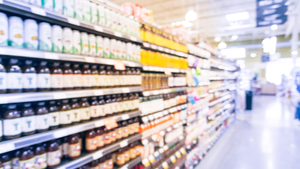Is organic produce about to experience a drop?Is organic produce about to experience a drop?
The category has been on the rise. But will sales hang strong in 2023?
March 17, 2023
The last several years has seen a continuous rise in sales for organic produce. According to The Organic Trade Association, organic produce generated $21 billion in 2021, which was 4.5% higher than 2020, which itself was almost 4% higher than 2019.
But higher prices lately have some in the industry concerned that 2023 could experience its first drop in the segment in a long time.
Still, there is strong interest in organics, with customers seeking healthy, safer, and cleaner choices. Despite the higher costs, organic produce sales continue to do well and project favorably in the year ahead.
In fact, while total volume has declined a bit over the last year according to the Organic Produce Network and fresh food research and analysis firm Category Partners, the money that has come in has risen between 4.1-6.8% in each of the last four quarters.
Most recently, third quarter figures for organic produce showed a 4.5% decline in volume but a 4.1% increase in dollars, topping $2.4 billion for the period, better than the total a year prior.
Retailers saw that continue in late 2022 and early 2023, and with costs stabilizing, volume has picked up and sales numbers are still showing increases.
“Some customers perceive organics as the cleaner choice; however, all produce is healthy and everyone should be eating more,” said Paul Kneeland, vice president of fresh operations for Encino, Calif.-based Gelson’s Markets. “We will continue to bring in more organic items to satisfy the needs of our customers as demand expands.”
Chris Mentzer, director of operations for Rastelli Market Fresh, with two New Jersey-based locations in Marlton and Deptford, believes organic produce has a niche customer base, but the stores historically see a spike in the beginning of the year as people kick off their resolutions.
“There is certainly a mystique for heart healthy and clean eating when it comes to organic products,” he said. “The thought of potential treatment to fresh produce is a deterrent from those looking for a healthier lifestyle. Compound that with also wanting their children to eat organic; it becomes a ‘feel-good’ about what they are putting into their families’ bodies.”
Natural Grocers, a chain of supermarkets that only carry organic produce, continues to see rising demand in organics in the new year.
“‘Climate-forward foods’ and ‘regenerative agriculture’ are terms that are starting to gain momentum in mainstream media,” said Katie Macarelli, a spokesperson for the Lakewood, Colo.-based chain. “There is less pretentiousness around shopping organic, particularly when folks realize it can be affordable.”
Pandemic growth
While Rastelli saw some new customers for organics during the first two years of the pandemic, Mentzer believes the economy and increase in pricing may drive some of the “newbie” organic shoppers back to the conventional side, as shopping baskets get more expensive.
Kneeland noted organic produce sales at Gelson’s increased 20% after the pandemic hit.
“When there were no other choices for produce during the height of buying food, customers that normally wouldn’t buy organic did, and were happy with the flavor and quality of the product so continued to buy once the height of COVID subsided,” he said.
While demand and interest for organics at Tops grew quickly during the pandemic, the supply chain ultimately struggled to keep up.
“Early on, new consumers were interested in organics and produce was flying off the shelves, so much so that we couldn’t meet the demand every day,” Cady said. “Things eventually returned to normalcy, and we’ve seen many of those same customers continue to buy organic — though not all.”
During COVID, Macarelli noted that many people started cooking and baking more at home out of necessity.
“When they got bored with their standard dishes, many turned to social media for inspiration,” she said. “There are so many great influencers out there that are focused on earth-friendly eating. They can quickly explain the benefits of organic produce and show how easy it is to integrate it into your day-to-day recipes or that special dessert.”
What’s trending
At Gelson’s, the most popular organic items the past couple of months have been cooking greens (hard, kale, mustard, beet, collard, and turnip greens), then berries, then apples, then citrus.
“In those categories, retailers may make product assortment decisions to carry just the organic item and not the conventional item if the retails are similar,” Kneeland said. “We will continue to focus on growing the organic produce business at Gelson’s in 2023.”
At Rastelli Market Fresh, by far the most popular organic item is lettuce, followed closely by bananas and fruits like apples for the kids merchandised with fresh ground natural peanut butter for dipping, Mentzer said.
Marketing and merchandising
While most other fruits and vegetable commodities are not really marketed heavily, organic produce does get that extra messaging on signs that attract customers at most stores.
“Entire sections of organic produce are signed and highlighted for the customer,” Kneeland said. “When marketing organic produce, it is best to make the price points of organic items the same as conventional when advertising — this [gets consumers to try] and removes the high price barrier.”
Natural Grocers leans into social media, email marketing, a monthly Health Hotline, crew education and even short films to show customers the benefits of organic produce.
Kneeland suggests merchandising organics with their conventional counterpart in the stores, so customers have more choices when looking to buy an item.
“For example, customers looking for peppers go to the pepper section so if you have organic peppers in that section, you will have a higher volume of customers seeing and probably buying more,” he said.
Mentzer disagreed on that approach, believing the organics should be separated.
“Organics are truly a steadfast in the marketplace, they basically sell themselves for those that choose that lifestyle,” he said. “The key is to assure that they are separated from conventional produce and that the signage calls out the product — like a mention if the product is local and where the produce is from brings the story right to the table. That information and farmer recognition often takes pressure off the price, because it now becomes more personal to the shopper.”
Cady’s opinion is that the best play is to integrate organics in stores next to the conventional options as well.
“As far as marketing, it is tougher because you need to walk a high wire and talk about the benefits of organic without talking down about conventional produce,” he said. “At the end of the day, organic or conventional, you will be better off eating more fresh produce every day.”
About the Author
You May Also Like






